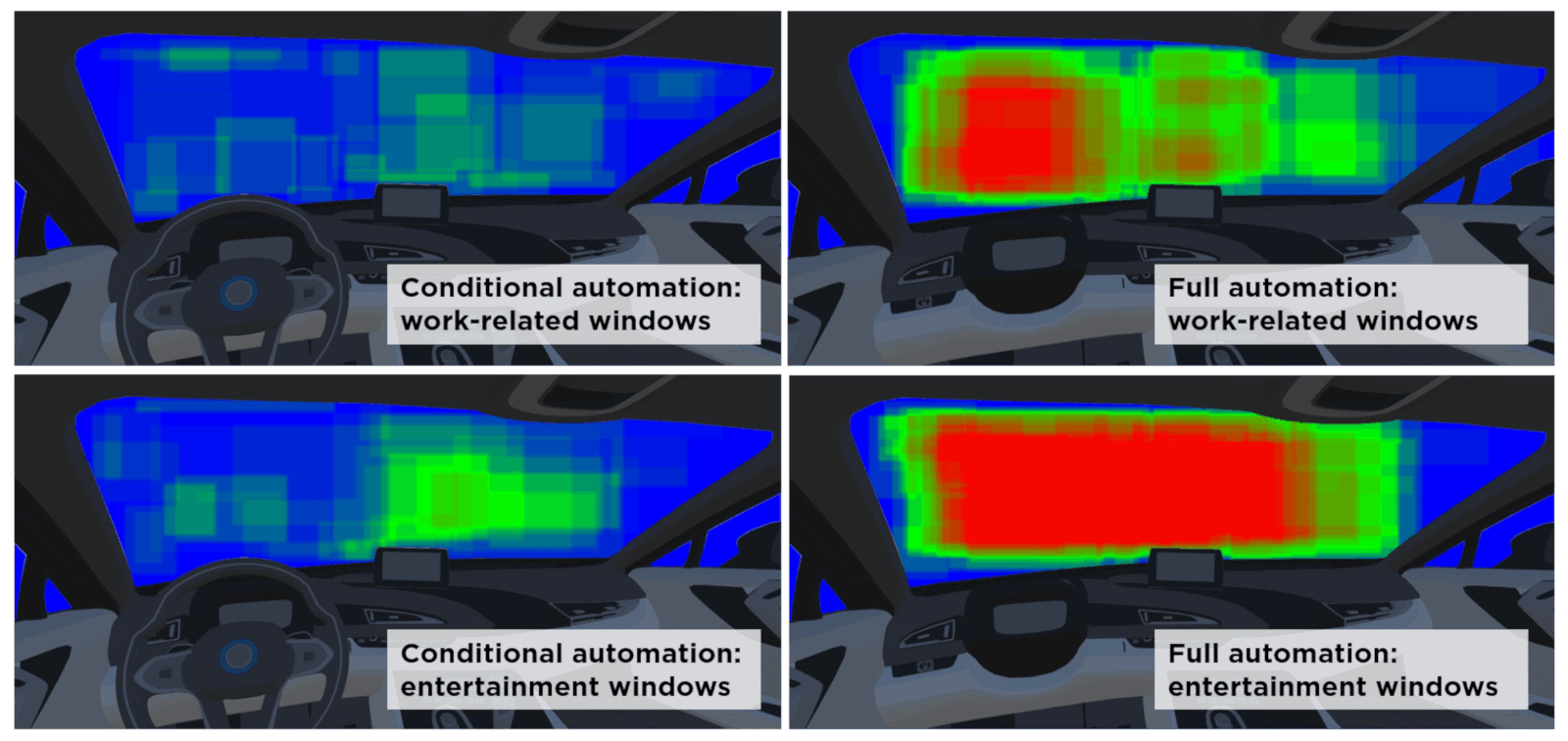The future of the windshield: Augmented reality in self-driving cars
With increasing automation of vehicles, drivers will become more disengaged from the primary task of driving. New displays that cover the entire windshield have thus gained much interest recently. Researchers now set out to explore the preferences of potential drivers regarding this seemingly futuristic technology.
By Andreas Riegler
More and more, windshield displays, which cover the entire windscreen and overlay information in an augmented reality style, are emerging as a promising technology to support (and entertain) future drivers of fully automated vehicles. It is currently unknown, however, how exactly potential drivers would like to use these interfaces.
Therefore, a recent article, published in the journal i-Com, addresses user preferences regarding windshield displays in different automated driving scenarios at two different SAE automation levels: conditional and full.
In a lab study with sixty-three participants, the Austrian and German researchers investigated different application window parameters such as position, size, transparency and importance of displayed content. The content categories included, among others, warnings and vehicle-related data but also work-related information, entertainment (music playlists, videos etc.) and social media.
Through a 3D computer simulation, the participants took the perspective of a car driver, steering their vehicle either on a highway road or in a city surrounded by skyscrapers. They were then asked to draw rectangles on the simulated windshield and to indicate which area should contain which type of information.

The researchers afterwards visualized the results in the form of heatmaps. These indicated that preferences differ with respect to the level of automation, but also to age, gender, and environmental aspects. For example, elderly participants utilized the displays more sparingly and, contrary to younger people, prioritized work-related content over entertainment.
Participants chose different content windows for different levels of automation
According to the authors, the findings furthermore suggest that drivers seem to be already well aware of the implications of different levels of automation and corresponding capabilities of vehicles. For example, the participants generally attributed higher importance to warnings and vehicle-related information in conditional automation, where drivers need to resume vehicle control quickly in case of a take-over situation. Additionally, content relevant for non-driving related tasks was placed in comparably small windows in more peripheral areas of the windshield display to avoid occlusion of the outside environment.

At full automation, the participants considered entertainment, work-related and social media content as more important – covering almost the entire windshield with it. “It is remarkable that the driver’s immediate field of vision is now covered by this information”, the researchers say. They suggest that designers should consider this new knowledge when designing in-vehicle applications for use in automated driving.
Read the original article here:
The article is part of a Special Issue on “User-centered Design for Automated Vehicles: HMIs, User Needs, and Preferences” in the journal i-com.